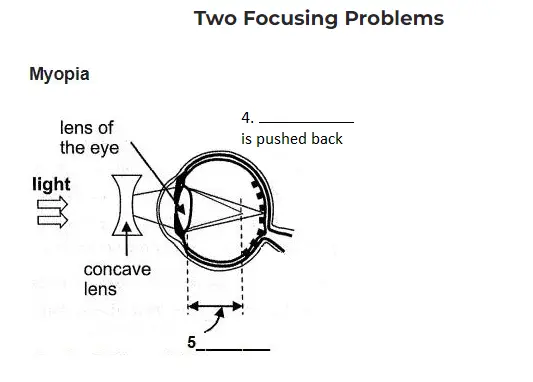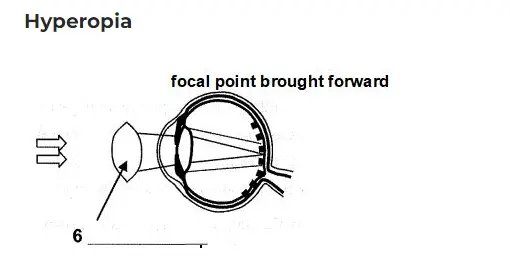The human eye was not designed for the years of intensive book learning that are now common in modern society. The result is eye strain and deterioration, often at an early age, but this same society has provided the obvious answer: corrective lensed eyeglasses. Ubiquitous and ever present, coming in all styles, colours, and designs, the optical correction of faulty vision with these devices is a phase which probably everyone will have to face at some stage in their lives.
It is not surprising that the first eyeglasses were made by the Catholic monks dedicated to the writing, translation, and reproduction of finely written religious texts. In contrast to the general undereducation and illiteracy of the times, these monks were versed in many languages, and worked for years in badly-illuminated candle-lit ‘scriptoriums’ – an effort which took its toll on their eyesight. Thus, the earliest pictorial evidence for the use of eyeglasses is a 1352 portrait of the Catholic cardinal, Hugh de Provence. However, the usefulness of glasses had already long been realised by the population at large, and by 1300 the trade of lens-grinding was widespread enough to require formal guilds and regulations.
Although popular and effective, no one was quite sure of the mechanics of it all. The first detailed mathematical explanation would not come until Johannes Kepler published his work on optics in 1604. Basically, glasses modify the focal length of the eye’s lens. There are two main focusing disorders: myopia and hyperopia. In the case of the first (near-sightedness, in which it is difficult to see objects at a distance), concave lenses are used, compensating for the eye’s refractive error by pushing the focal point back, to the retina. Hyperopia (far-sightedness) uses convex lenses to do the opposite, bringing the focal point forward, to the retina.
Yet, to accommodate the range of situations in which clear vision is needed, from reading books and computer monitors, to television watching and driving cars, some glasses are equipped with more than one lens type. The most common are bi-focal lenses, with two distinct horizontal viewing areas. A conscious effort is thus necessary to focus through the band of the lens necessary to solve the visual challenge faced. A variation which helps with this are lenses which allow progressive transitions, rather than distinct changes between viewing angles. The simplest system of all is to merely have several pairs of glasses, reserving them for specific tasks.
These days, lenses are most commonly a plastic polycarbonate material, offering lower weight and higher scratch resistance, as well as the ability to screen out harmful ultraviolet and infrared rays from the sun. Similarly, the frames are flexible and lightweight, offering less friction and irritation for the skin. Nevertheless, glasses cannot be said to be convenient devices. Grease, dirt, sweat, and vapour can streak them when eating or cooking, or from natural condensation due to temperature changes (such as when exiting a heated building into the colder outdoors). Glasses are also awkward during fast-motion sports or labouring jobs, are rather easily broken, and not cheap to repair.
Obviously then, contact lenses have considerable advantages. These are inserted directly over the pupil, and have the additional benefit of a perceived aesthetic appeal. Traditional glasses are sometimes seen as unfashionable, carrying associations of age or infirmity. The almost invisible contacts avoid this, which is perhaps one reason why most wearers are female. Having said that, by completely covering the pupil, contacts also offer better peripheral vision, and are more appropriate for certain less common vision impairments. Their disadvantage is the difficulty and discomfort involved in putting them on and taking them off. They can also result in dryness and irritation.
Interestingly though, the modern era has seen eyeglasses become somewhat of a fashion accessory. The musicians Buddy Holly and John Lennon were so characterised by their glasses that their names have been given to the style they wore. Glasses can now even be bought ‘off the shelf’, without an eye examination, cashing in on the need for quick solutions that people want in a busy society. Although they are a source of much revenue, opticians advise people to first have proper eye examinations, not only to ensure the best results, but also for early detection of potential eye diseases, such as glaucoma, which might actually be the root cause of focusing problems.
The lace of the future may well be ‘laser eye surgery’. In this process, laser beams are used, usually to alter the curvature of the cornea and thus provide long-term corrective benefits. Although straightforward enough and increasingly safe and affordable, given the delicacy of the eye, there remains a small risk of failure and resultant vision problems, such as ghosting or halos. It is an interesting fact, that, despite the growth of such surgery, and the use of contacts, traditional lenses remain as popular as ever. Nothing, it seems, can match the simple convenience of putting on a pair of glasses.
Questions 1-3
Do the following statements agree with the information given in Reading Passage One?
TRUE if the statement agrees with the information
FALSE if the statement contradicts the information
NOT GIVEN If there is no information on this
1. Most people study hard today.
2. When glasses were invented, most people could read.
3. Most monks suffered eye problems.
Questions 4-6
Complete the diagram. Choose NO MORE THAN TWO WORDS from the passage for each answer.


Questions 7-10
Answer the questions. Choose NO MORE THAN TWO WORDS from the passage for each answer.
7. Who first explained how glasses function?
8. What is needed when viewing through bi-focal glasses?
9. What can cause condensation on glasses?
10. What aspect of sight do contact lenses improve better than glasses?
Questions 11-13
Choose the correct letter, A, B, C, or D.
11. Modern lenses are
A safer.
B heavier.
C softer.
D more flexible.
12. ‘Off-the-shelf’ glasses
A are not popular.
B can cause glaucoma.
C earn shops good money.
D are recommended.
13. Laser eye surgery is
A of limited benefit.
B more convenient than glasses.
C becoming more popular.
D complex.

